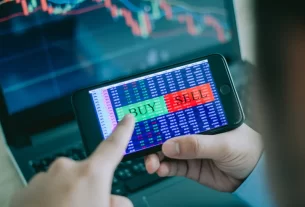
Emerging Trends in Impact Investing
With the rise of impact investing, new investment opportunities have appeared to connect with the UN Sustainable Development Goals.
More investors feel confident that impact investments can deliver market-rate returns, yet the area can be intimidating and those who want to invest must be on the lookout for false or misleading promises or hype, vaguely referred to as ‘greenwashing’.
The Integration of Impact and Traditional Investing
Despite this rapid growth, many investors still see impact investments as a small part of a diversified portfolio, but more and more asset owners think that incorporating impact considerations into every aspect of their investments will lead to better long-term financial and social outcomes. For impact investors, returns are expected to be risk-adjusted market-rate or higher, and as for performance, a similar percentage report meeting or exceeding financial performance goals. Their approaches would continue to evolve, just as they ought to, with more impact investors seeking to mainstream impact-investing strategies. For example, some investors seek to fund companies or businesses that promote gender equity in the workplace or broader community, and this sits alongside a broader trend toward diversity, equity and inclusion (DEI).
Impact Measurement and Management
Impact investors (Span credit Flickr)At the same time, accountability – the idea that an investment had some kind of social or environmental impact, and that this could be measured – became an important added element of these types of investments. New, and sometimes innovative, impact measurement frameworks and reporting mechanisms were developed, aimed at making the investment decisions more informed and decisive. Long-time owners of niche impact strategies are now able to increasingly deploy an impact investing approach across all of their investments, and some of the largest private equity firms in the world have started to offer impact investing products and services as part of their suite of capabilities. The other is ‘impact first investing’, where the focus is on achieving social and environmental impacts, while financial returns become secondary. Often forgiving, this approach appears to work best in the field of healthcare and agri-food, where investors have a clear line of sight to short-term tangible outputs (homes built, jobs created), while being somewhat less susceptible to macroeconomic headwinds. MIAs are also commonplace. Model examples include mission-related investments (MRI), which ‘allow foundations to deploy capital to the same degree that they employ grants to advance a philanthropic agenda’, and programme-related investments (PRI), a ‘ type of investment used by a foundation that takes into consideration the programmatic mission of the foundation’.
Socially Responsible Investing
Forged by investor expectations of positive social and environmental outcomes from investments, as well as financial returns, this emerging sector has created a growing demand for measurement standards and reporting regimes through which impacts are determined at the project level, with ever more sophisticated methods of impact evaluation. Enmeshed within the world of investments, the ESG movement will likely continue to pervade traditional investing practices. Socially responsible investing (SRI) strategies are often chosen by investors as a means of making sure that their investments align with their own personal convictions and values, which often entail excluding investments in companies involved in different types of contentious activities including, for example, firearm-manufacturing and tobacco production. There is an increasing trend to raise money for an impact project through innovative financing instruments. For example, the green bond market is growing rapidly as a financing mechanism for projects with environmental, social and sustainable development objectives – some 300 such bonds were sold last year, and growth is predicted to be the top agenda again this year. This is just one example, but the trend is bound to rise.
Thematic Investing
Modern investors have greater opportunities – often even when and because they seek to invest in themes that they believe are linked to their moral or ethical commitments, ranging from renewable energy to ethical business practices. This sometimes enables entrepreneurs and managers at their investee firms to meet societal goals while also providing limited partners with financial returns. Unlike index funds, which seek to mirror the overall market, thematic products give investors access to portfolios constructed explicitly to pursue long-term trends, such as digital disruption and AI, global fragmentation, low carbon transition, or demographic divergence. Given this, it is likely that we’ll see a surge of impact in 2024 around initiatives that focus on diversity, equity and inclusion (DEI). Given the vast body of evidence showing that DEI not only makes moral and good business sense, but also can increase financial performance, this is the right impact theme in the right year.







